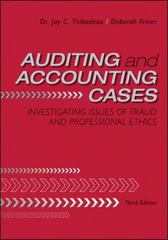A Ponzi scheme is any fraudulent investment plan that pays its returns to an investor from either
Question:
A Ponzi scheme is any fraudulent investment plan that pays its returns to an investor from either that investor’s own principal or principal paid by future investors, not from legitimate investment returns. To carry out his plan, Bernie Madoff represented to clients and potential clients that he would invest their money in “shares of common stock, options and other securities of well-known corporations, and upon request, would return to them their profits and principal In fact, Madoff never invested the funds in the securities that had been promised.
Rather, the funds were deposited into a bank account at Chase Manhattan Bank, based in New York City. If clients requested to receive “profits earned” or redeem their investment principal, Madoff merely used the money in the bank account at Chase Manhattan Bank that had belonged to either that client or other clients to pay off the requested sum.3 The Split-Strike Conversion Strategy In the early 1990s, Madoff began to receive investment commitments from key institutional investors. While he did not promise specific rates of return to clients, Madoff knew that the investors expected that their investment would perform at a level higher than the market average. To meet their expectations, Madoff claimed to have mastered a “split-strike conversion strategy.”4 Under his split-strike conversion strategy, Madoff promised clients and prospective clients that their funds would be invested in a “basket of stocks that would closely mimic the price movements of the Standard & Poor’s 100 Index.” He further promised to “opportunistically time these purchases and would be out of the market intermittently, investing client funds during these periods in United States Government-issued securities such as United States Treasury bills.” Madoff also promised to hedge the investments in common stocks “by using client funds to buy and sell option contracts related to those stocks, thereby limiting potential client losses caused by unpredictable changes in stock prices.” Madoff, in reality, never made the investments that he promised to clients.5 Concealment Techniques To conceal the fraud, Madoff first claimed to have purchased and sold the securities almost exclusively in overseas markets. In addition, Madoff created “false trading confirmations and client account statements that reflected the bogus transactions and positions” and then sent them to investment clients. According to Madoff, “The clients receiving trade confirmations and account statements had no way of knowing by reviewing these documents that I had never engaged in the transactions represented on the statements and confirmations.”6 Madoff’s fraud was further concealed “through the filing of false and misleading certified audit reports and financial statements with the SEC.”
From 1991 through 2008, Bernard L. Madoff Investment and Securities’ (BLMIS) financial statements were audited by the accounting firm Friehling & Horowitz. In March.........
Case Questions
1. Refer to the fundamental principles governing an audit. Under the responsibilities principle, auditors are required to exercise due care and maintain professional skepticism throughout the audit. Based on the case information, do you believe that the auditors from Friehling & Horowitz exercised due care and maintained professional skepticism throughout the audit? Why or why not?
2. Consider the charges brought against the BLMIS auditor, David Friehling, regarding his failure to complete certain audit steps. If you were auditing BLMIS, what type of evidence would you like to review to determine whether BLMIS had (1) purchased, (2) sold, and (3) maintained proper custody of investment securities?
3. Consider an auditor’s common law liability to third parties. Describe the difference between the three levels of failure to exercise due care: ordinary negligence, gross negligence, and fraud. Based on the case information, comment on the possible level of failure that was seemingly exhibited by Friehling & Horowitz. Do you believe that there are any mitigating factors to help defend the actions of the auditing firm?
4. Consider Section 24 of the Securities Act of 1933 and Section 32 of the Securities Exchange Act of 1934. Do you believe that an auditing firm should be held criminally responsible for a fraud committed by its client’s management team? Next, based on the case information, do you believe that the BLMIS auditor, Friehling, should be facing criminal charges? Why or why not?
Step by Step Answer:

Auditing And Accounting Cases Investigating Issues Of Fraud And Professional Ethics
ISBN: 9780078110818
3rd Edition
Authors: Jay Thibodeau, Deborah Freier





